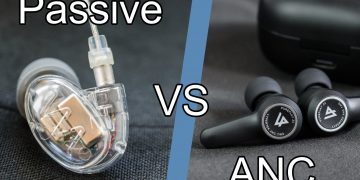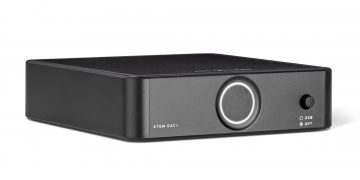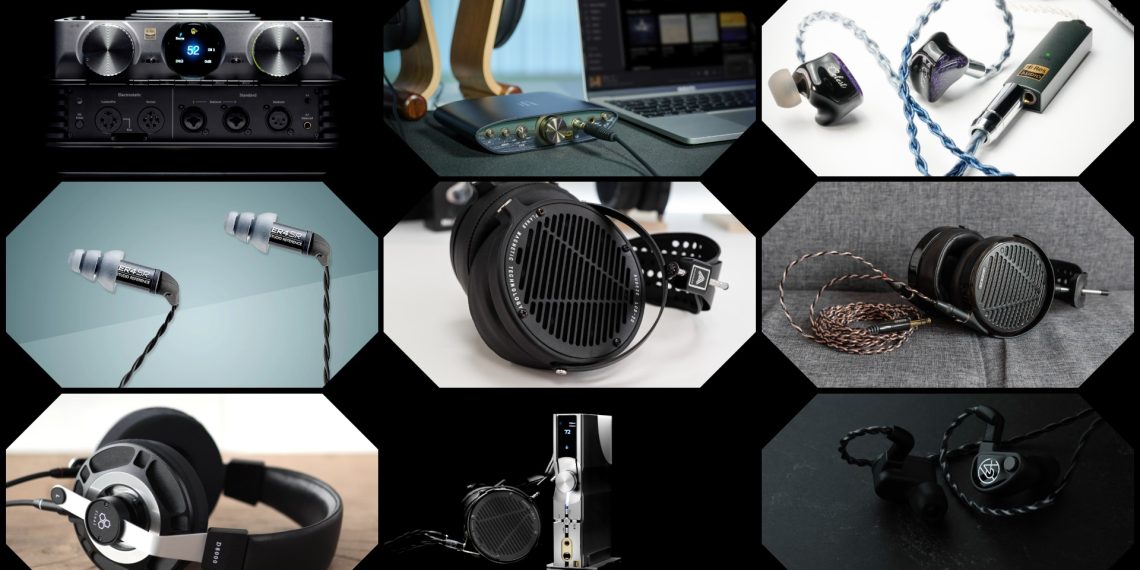It is tempting to think nowadays that smaller is better, cheaper and easier to carry around; but when it comes to headphones there are differences between large and small which are not all that obvious.
One of the relatively new developments in portable audio is the in-ear headphone, as opposed to the ‘earbud’ which goes back 25 years or so. The earbud sits in the ear’s concha and rests up against the ear canal (sort of), whereas the in-ear headphone sits in the ear canal itself and ideally creates a seal, for far better isolation and bass response when compared to the earbud.
In-ear (Intraaural)

This coupling method between speaker and ear gives a much more intimate presentation – indeed, more intimate than the producer or mastering engineer perhaps intended. This brings a danger of fatigue with certain recordings, and the soundstage is typically narrower making any spatial effects less pronounced.
One of the important parts of getting the most out of the in-ear headphone is the seal created when the right eartips are used. Everybody’s ears differ, and it is likely that some experimentation is necessary with the tips before the right effect is achieved.
Not everyone can comfortably wear in-ear headphones; some also prefer to keep the presentation as close to the intended ‘2 speakers in a room’ sound as possible. Full-size headphones replicate this better.
On-ear (Circumaural and Supraaural)
This is the style everyone surely thinks of when they hear the word ‘headphone’ – speakers sitting on or over the ears, connected by a headband.
The Circum-aural style encloses the ear and is the most likely to give the ‘2 speakers in a room’ effect; the entire ear is subject to sound coming from the headphone driver, and this gives the outside ear or ‘pinna’ a chance to bounce the sound around a bit before it enters, much like natural environmental sounds.

Also, headphone designers have much better opportunity to treat the headphones, or make minor adjustments to ensure that they have the required frequency response. For example, holes or ‘ports’ can be created to reduce bass frequencies, and bumps in any frequency response graph can be dealt with by membranes which block certain frequencies and allow others to penetrate. There are fewer opportunities to tinker with in-ears before the design has to go back to the drawing board.
To a lesser extent, there’s a better chance of the left ear picking up sounds from the right speaker and vice-versa; mirroring what happens in real life. Sound passes through the head and is also filtered by it; the resulting sound is therefore attenuated and with a lot of high-mid frequency detail lost. Together with a slight delay (the time taken for sound to cross from one ear to another is around 3 thousandths of a second), the brain converts these subtle details into information on sound placement.
This is why binaural recordings are so lifelike; given that the technique involves small microphones placed in the ears of a real human head or dummy, any recorded audio has the artefacts lent to it by the head on which it is recorded.
The circumaural style is considered to be the most comfortable generally; the intended use for circumaural headphones is that the wearer stays relatively still, perhaps seated, and so the headphones rest gently on the head and ears.
Supraaural headphones are a little smaller and are designed to sit on the ears, against the pinna. This often makes them more practical for the purpose of portability, but often at the expense of comfort when it comes to extended listening sessions. This design tends to press harder on the ears, both to increase the chances of a good seal and to prevent the headphones’ headband from slipping as the head moves. Supraaural headphones are generally designed for outdoors with more active uses in mind, and so tend to be closed-back to offer better isolation.
It is perhaps easy to choose between circumaural and supraaural headphones; do you wish to remain at home and listen, or go out, for instance? In-ear headphones are less clear-cut. They are being designed now for all scenarios it seems. Our habits may have yet to catch up, but in-ear headphones such as the sumptuous Final Audio Piano Forte range are now being designed for the armchair listener, so the choice from now on may be less clear, but it will have increased, which is no bad thing.




 HiFiHeadphones Best Buy list
HiFiHeadphones Best Buy list